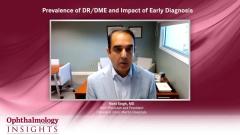
Prevalence of DR/DME and Impact of Early Diagnosis
Carolyn Majcher, OD, FAAO, and Rishi Singh, MD, discuss the current prevalence and future projections of diabetic retinopathy and diabetic macular edema (DR/DME) as well as the impact of early diagnosis and treatment for patients with diabetic retinal diseases.
Episodes in this series

Carolyn Majcher, OD, FAAO: Well hello and thank you for joining this Insights® presentation entitled "Promoting Early Detection and Timely Treatment of Diabetic Retinopathy and Diabetic Macular Edema". I'm Dr Carolyn Majcher, an associate professor and the director of residency programs at the Oklahoma College of Optometry at Northeastern State University in Tahlequah, Oklahoma. Joining me today is Dr Rishi Singh, a staff physician and president of the Cleveland Clinic Martin Hospital in Stuart, Florida. Today we'll discuss some of the challenges in the early diagnosis of diabetic retinopathy and diabetic macular edema, and also share some strategies to detect and treat retinopathy in a timely fashion. Thank you so much for joining us today. So to kick things off, Dr Singh, can you please describe the current prevalence and future projections of diabetic eye diseases such as diabetic retinopathy and macular edema?
Rishi Singh, MD: Dr Majcher, those are great questions to ask because the number is increasing rapidly. We've seen in our current population, about 7% to 8% have diabetes, and that number keeps growing each and every year with unfortunately the common situations we're all aware of; obesity, our adoption of Western diets, sometimes genetic predisposition, can all lead to diabetes. In general, the numbers are projected to increase significantly. By 2045, we're expecting somewhere between 15% of the United States population to be diabetic by that point in time. What comes with that is the vision-threatening retinopathy complications that we're all used to taking care of and screening for in clinic.
Diabetic retinopathy, and more particularly diabetic macular edema, is the leading cause of vision loss in this population. The biggest problem that both of us face as eye care practitioners is that this is a silent disease, one that doesn't necessarily come in and say that there's an issue and problem until sometimes it's too late. And so therefore, it's our jobs as primary care eye physicians to screen these patients, start to triage them appropriately, and determine what treatment options are available to us.
Carolyn Majcher, OD, FAAO: It's impressive how the projection for diabetic retinopathy is expected to nearly triple by the year 2050, so we certainly have this increasing demand for eye care approaching us here. Could you also tell me what impact early diagnosis and treatment has on the visual outcomes of patients with diabetic retinal diseases?
Dr. Rishi Singh: This is such a great topic because the biggest factor for impact is, we looked at all of these things: the biochemical profiles of patients, their hemoglobin A1C, the length of time they've had diabetes, their genetic race, and their ethnic background. The biggest predictor actually is baseline visual acuity, and that again speaks to the idea that we have to be able to evaluate these patients and treat them earlier in their disease state rather than waiting longer.
I think too many times, we've all seen patients in practice that we've said, “boy, you're developing diabetic retinopathy, and your hemoglobin A1C Is out of control; why don't you come back after you have your hemoglobin A1C treated? And therefore you might have a better treatment outcome or maybe delay treatment.” The reality of that situation is it actually doesn't only delay treatment. In fact it may kick the can down the road only to cause worsening issues as time goes on. So I think it's up to us as practitioners to sit down with patients and say to them that the earlier you get treatment, the better your prognosis is for visual outcome, especially in anti-VEGF area where we've looked at all the structural endpoints, all the things that you'd imagine, even artificial intelligence. The strongest predictor still in this day and age is baseline visual acuity on the initiation of treatment to determine treatment outcomes. I think that's been an impressive finding from a lot of the research that we've been able to do the past couple years.
Carolyn Majcher, OD, FAAO: You put that so eloquently, and I couldn't agree more. I believe earlier treatment, especially for those with risk factors for progression, really puts patients in the best position to maintain good vision and preserve quality of life.
Transcript edited for clarity
Newsletter
Don’t miss out—get Ophthalmology Times updates on the latest clinical advancements and expert interviews, straight to your inbox.


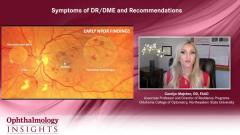



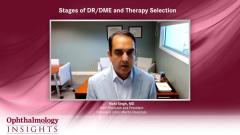

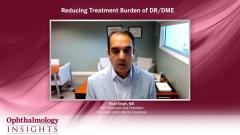
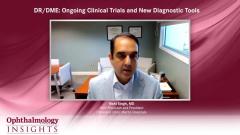












































.png)


